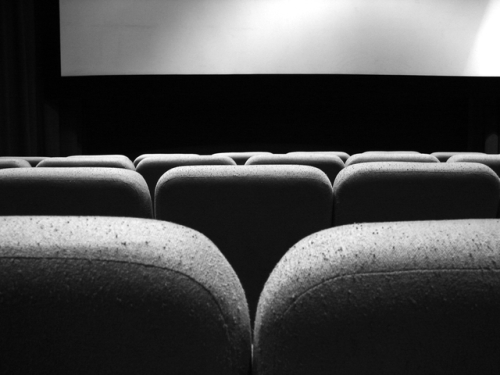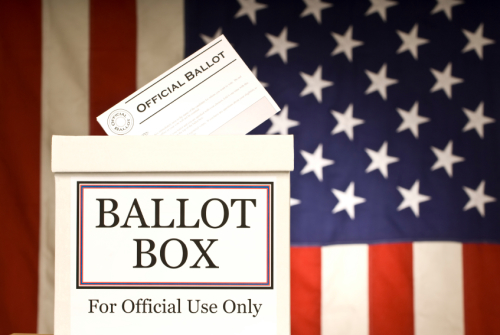As is our annual tradition, M and I snuggled up on the couch last Sunday and watched the Academy Awards telecast. We didn’t have skin in the game, but we both love movies, and enjoy seeing the people who entertain us look beautiful and receive honors for their talents.
Alas, the number of people who share our enthusiasm for this event has declined. According to The New York Times, viewership of the Academy Awards show dropped by roughly 8 percent from last year. A little more than 34 million people tuned in, making it the lowest-rated Oscars in eight years, and the third-lowest since Nielsen began tracking viewership in the mid-1970s.
The Times credited several reasons for this decline: Black viewers upset about a second straight year of all-white acting nominees, moviegoers who lacked sufficient passion for the nominated films and the public’s annoyance at performers who use their speeches to discuss causes like climate change and equal pay. While these explanations all have merit — particularly the diversity issue — there are others that need to be addressed.
Firstly, we’re all busy. If we’re not working or spending time with our families and friends, we’re streaming TV shows, attending concerts, going to movies, reading books, listening to music, taking classes, surfing the web, playing games, volunteering, participating in hobbies or updating social media. In the land of time-consuming options, the decision to do the same thing as millions of others at the same time generally takes a compelling reason or shared interest, and this year, many people had compelling reasons not to watch the show.
People were also “watching” the Oscars in a different way, one that wasn’t well tracked by traditional Nielsen ratings. Even in our own house, we viewed the program together live as it was broadcast. Who does that anymore? Most of the time, people see shows they’ve previously recorded when it suits their schedules.
Some people followed the Oscars without physically viewing them; instead they read about the entire affair on Twitter because it provided real-time news of winners, commentary on fashion and an inside look at the event from the celebrities themselves. In fact, Twitter users sent 24.2 million tweets about the Oscars during the broadcast, Re/Code reported, up from 19.1 million tweets in 2014.
While many were “watching” the event solely on the micro-blogging site, others were probably multi-tasking their media consumption. M watched the event on TV with a laptop perched on his thighs. He’s not much of a Twitter user, but on Oscars night, he always makes an exception and live-tweets his reactions to every speech, skit, musical performance and award.
That said, viewership of the Oscars telecast will continue to decline unless major changes are made to capture the audience’s attention.
One way to do this is for Hollywood to update its distribution of movies. Currently, non-blockbuster films (i.e., movies not expected to break $100 million on opening weekend) will often open in big cities, yet never reach smaller venues. While many of these movies later earn Oscar nominations, few fans have the ability to see them. Americans living in suburban and rural areas enjoy a good buddy comedy or action flick as much as the next person, but they crave films with substance, cult classics and documentaries as well.
The Academy should also move the Oscars deadline to December 1 and release the critically acclaimed films in theaters earlier in the year. That way, moviegoers have more time to catch them on the big screen, or stream them online in the weeks after the nominees are announced.
Increase technological options for the blind and deaf. Doing so will lead to more ticket sales and give audiences with physical limitations the opportunity to enjoy such entertainment as it was meant to be consumed. Include captions on all streaming video, particularly the clips posted online with the intention of building buzz. Fans won’t share a viral video they can’t watch/understand themselves.
Allow the public to participate in the awards process. Increase each category by one slot, and give movie lovers the chance to choose the 6th nominee. Then, during the voting season, provide those same film buffs with the ability to vote on the entire slate via Oscars.com. If the Academy wants to keep the voting process strictly to members, it can still present the audience with a place to make predictions and post the “fan favorites” at the bottom of the screen during the telecast.
Hollywood must address the #OscarsSoWhite issue. The people in power should make a sincere effort to hire a more diverse range of talent and crew. Encourage younger filmmakers of all backgrounds to bring their unique voices to the fore. Give meaty roles to more experienced actors and actresses. And purchase scripts with stories that move beyond racial clichés and stereotypes.
The Academy must diversify its membership. In 2012, the Los Angeles Times determined that Oscar voters were on average 63 years old; 76 percent of them were men, and 94 percent of them were white. Only about 45 percent of them were active in the industry.
Lastly — and most importantly — make better movies. So many top-notch actors and writers and directors have moved over to television because that’s where they’re able to create quality entertainment. Please stop producing so many sequels, remakes and CGI-heavy clunkers. In a world with a million options to fill our time, original storytelling is the best way to capture the public’s attention.
–Photo by Carlos Sillero.






One Comment
Steven
Even in our own house, we viewed the program together live as it was broadcast. Who does that anymore?
That’s actually becoming more common in the age of cord-cutters, I think. I watch live tv sometimes because I don’t have cable- instead, I have an antennae plugged into my television to pick up over-the-air channels. With no DVR, the only way to watch prime time shows on the same night is to watch it in real time, commercials and all. (After the first night, there’s network websites, Hulu, and a host of other viewing options.)